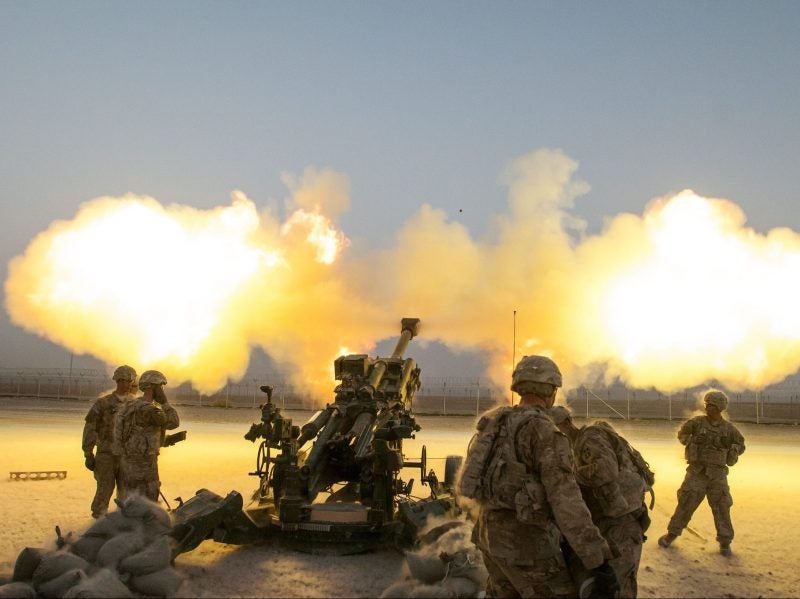
The US Army is developing an AI-powered artillery shell capable of more accurate long-range fire. The Cannon-Delivered Area Effects Munition (C-DAEM) shell will be capable of locating and targeting moving vehicles.
C-DAEM is designed to replace the US Army’s current dual-purpose improved conventional munition (DPICM), which drops explosive charges across a target area to guarantee a target is hit by artillery.
US Army Deputy Project Manager, Combat Ammunition Systems, Joint Program Executive Office Armaments and Ammunition, Peter Burke, said: “The U. Army is not developing AI missiles that find their own targets. The Cannon Delivered Area Effects Munition program will develop a 155mm artillery projectile capable of defeating moved and moving armored targets.
“These projectiles will be fired through the Army’s command and control system, where an observer has identified the target type and location. After the projectile has been fired, the sensors on the projectile will be used to search the area around its reported position, and if found, attack the target.”
It will be based on the Raytheon Excalibur 155mm round, which uses GPS to improve artillery system accuracy. The US Army has fired over 1,400 Excalibur projectiles since 2018.
The new system will work in areas where GPS is unavailable or jammed to ensure the weapon can still hit its target, as reported by New Scientist.
The New Scientist article says of C-DAEM: “The weapons will have a range of up to 60km…and will be able to search an area of more than 28 square kilometres for their targets.
“They will have a method for slowing down, such as a parachute or small wings, which they will use while scanning and classifying objects below.”
The US Army said the aims of C-DAEM are to: “Develop and deliver new and improved capabilities that will provide highly lethal effects on a wide spectrum of stationary or moving complex target sets (personnel and vehicles), where their exact position has high uncertainty.
The programme is expected to be completed by 2023 with the army aiming for a weapon that “after ejection from its artillery shell over the target area, each submunition independently searches for armoured vehicles, and upon detection, fires an EFP through its roof to defeat the target.”
The army also requires the weapon to be compatible with its suite of artillery pieces including the M777 towed Howitzer and the M109A6 Paladin.
Unlike laser-guided weapons or those with pre-programmed targets, the system will be able to able to isolate and choose targets itself.
The US Army previously requested that $25m be shifted to efforts to develop and demonstrate the capability of the C-DAEM. The new weapons are in part being developed due to the inaccuracy of current cluster munitions.
Current cluster projectiles are limited by rules preventing anything with an over one per cent ‘dud rate’ (unexploded ordnance) being used.
The focus of C-DAEM at current is anti-vehicle fire however the Army have said they are also developing its anti-personnel capabilities.
The weapon could enter service in as soon as 2020, with a significant amount of the development now focusing on creating the software to support the system.



